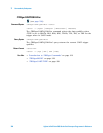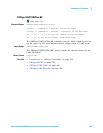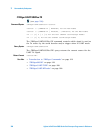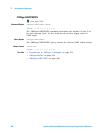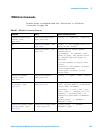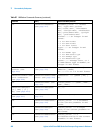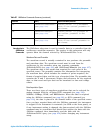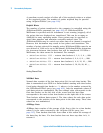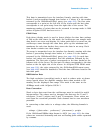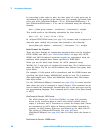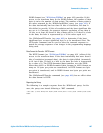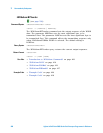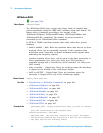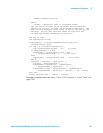404 Agilent InfiniiVision 5000 Series Oscilloscopes Programmer's Reference
3 Commands by Subsystem
A waveform record consists of either all of the acquired points or a subset
of the acquired points. The number of points acquired may be queried
using :ACQuire:POINts? (see page 130).
Helpful Hints:
The number of points transferred to the computer is controlled using the
:WAVeform:POINts command (see page 413). If :WAVeform:POINts
MAXimum is specified and the instrument is not running (stopped), all of
the points that are displayed are transferred. This can be as many as
4,000,000 in some operating modes. Fewer points may be specified to
speed data transfers and minimize controller analysis time. The
:WAVeform:POINts may be varied even after data on a channel is acquired.
However, this decimation may result in lost pulses and transitions. The
number of points selected for transfer using :WAVeform:POINts must be an
even divisor of 1,000 or be set to MAXimum. :WAVeform:POINts determines
the increment between time buckets that will be transferred. If POINts =
MAXimum, the data cannot be decimated. For example:
• :WAVeform:POINts 1000 — returns time buckets 0, 1, 2, 3, 4 ,.., 999.
• :WAVeform:POINts 500 — returns time buckets 0, 2, 4, 6, 8 ,.., 998.
• :WAVeform:POINts 250 — returns time buckets 0, 4, 8, 12, 16 ,.., 996.
• :WAVeform:POINts 100 — returns time buckets 0, 10, 20, 30, 40 ,..,
990.
Analog Channel Data
NORMal Data
Normal data consists of the last data point (hit) in each time bucket. This
data is transmitted over GPIB in a linear fashion starting with time bucket
0 and going through time bucket n - 1, where n is the number returned by
the :WAVeform:POINts? query (see page 413). Only the magnitude values of
each data point are transmitted. The first voltage value corresponds to the
first time bucket on the left side of the screen and the last value
corresponds to the next-to- last time bucket on the right side of the screen.
Time buckets without data return 0. The time values for each data point
correspond to the position of the data point in the data array. These time
values are not transmitted.
AVERage Data
AVERage data consists of the average of the first n hits in a time bucket,
where n is the value returned by the :ACQuire:COUNt query (see
page 127). Time buckets that have fewer than n hits return the average of
the data they do have. If a time bucket does not have any data in it, it
returns 0.



